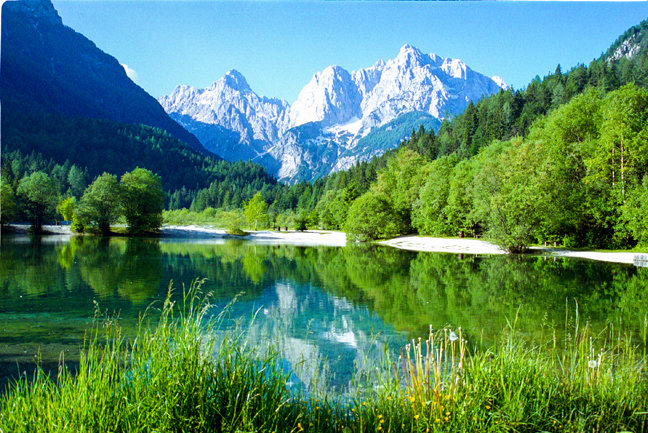LJUBLJANA
By: Juan de Dios Román and Žan Mali

Slovene, officially the Republic of Slovene, is a sovereign country of Central Europe, a member of the European Union. It limits with Italy to the west; with the Adriatic Sea, to the southwest; with Croatia to the south and east; with Hungary, to the northeast; and with Austria, to the north. It has a population of 2 047 000 inhabitants. The capital and most populous city is Ljubljana.

Julian Alps Lonley Planet
HISTORY
The most important Roman cities in the area were Celeia (now Celje), Emona (Ljubljana), Nauportus (Vrhnika) and Poetovio (Ptuj). The Slovenian territory was divided between the Roman provinces of Dalmatia, Italy, Noricum and Pannonia.
In the 4th century, Noricum was divided into two Roman provinces, Noricum Ripense and Noricum Mediterraneum, the latter also called Interriore Noricum. While the first of these provinces was invaded by Germanic tribes at the fall of the Roman Empire, the second was able
to maintain its social structure and, after the occupation of the Ostrogoths, declared its own independence.
 Map of Europe
Map of Europe
Some believe that the Slavic ancestors of the current Slovenians settled in this area around the 6th century. However, there are others who claim that they are descended from the indigenous peoples of the Eastern Alps.
CLIMATE
The climate is Mediterranean on the coast, alpine in the mountains, and continental with mild to hot summers and winters in the plains and valleys of the east of the country. The average temperature is -2 ° C in January and 21 ° C in July. The precipitations are of 1000 mm in the coast, 3500 mm in the Alps, 800 mm in the Julian Alps southeast and 1400 in the center of the country.

Snow is quite frequent in the winter of Slovenia, the snow record in Ljubljana was produced in 1952, with 146 cm.
Compared to other countries in the region, in Slovenia there is not much wind, as it is surrounded by the Alps.
ECONOMY
Slovenia is a developed country, with a GDP per capita of 23,335 dollars. Although in 2006 the relatively high inflation dropped to 2.3% (before the adoption of the euro), it presented a year-on-year variation of 5.1% in 2007. In recent years the Slovenian economy has increased the rate of growth it has maintained since its independence, registering 4.3% in 2004 and 2005, 5.9% in 2006 and 6.8% in 2007. [citation needed] In the first three quarters of 2008, the economy expanded at an annual rate of 5%.
Since January 1, 2007, Slovenia belongs to the euro zone, leaving the tolar for the common currency of the European Union, the euro. Slovenia together with Croatia were the most developed countries of the former Yugoslavia.
Congratulations Juan, you did a great job describing our little Slovenia and our capital city Ljubljana. By Žan Mali
I would just like to tell you that Slovenia is really a beautiful country to live in and if you ever travel around Europe, you should definitely consider visiting it.